
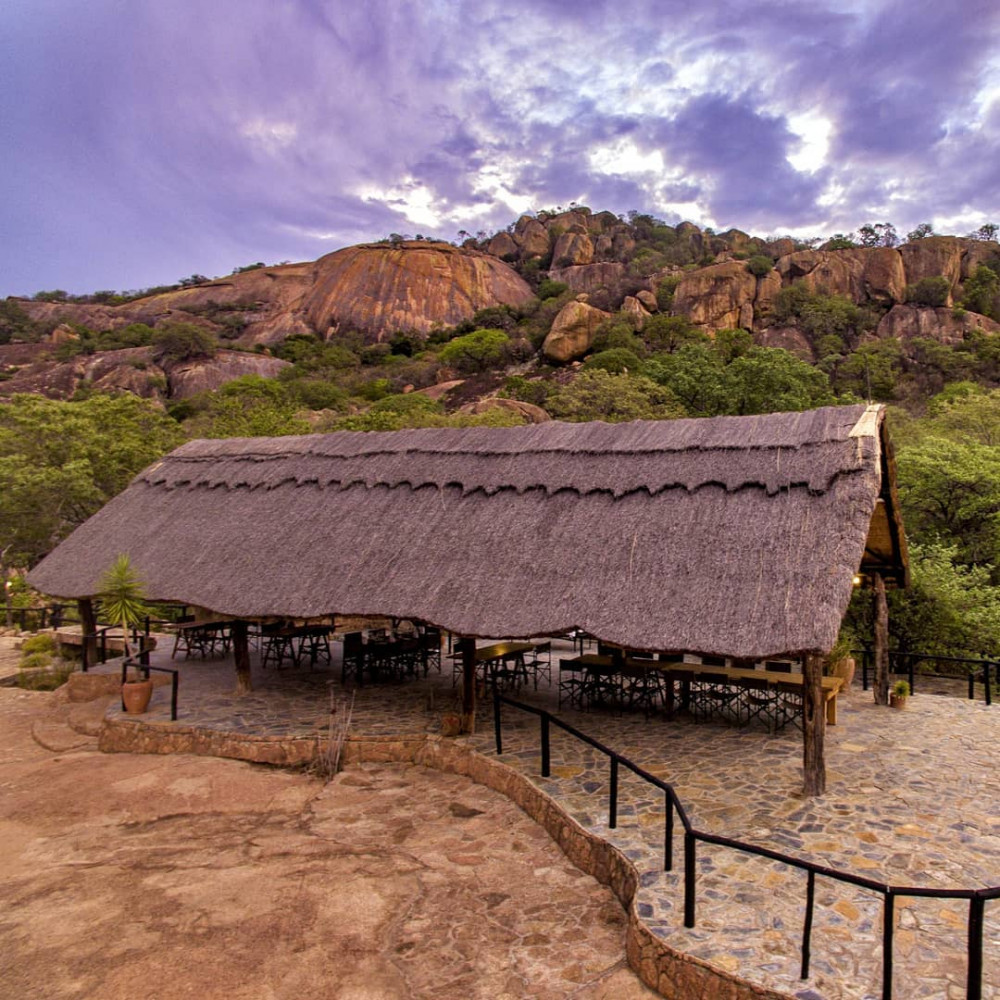
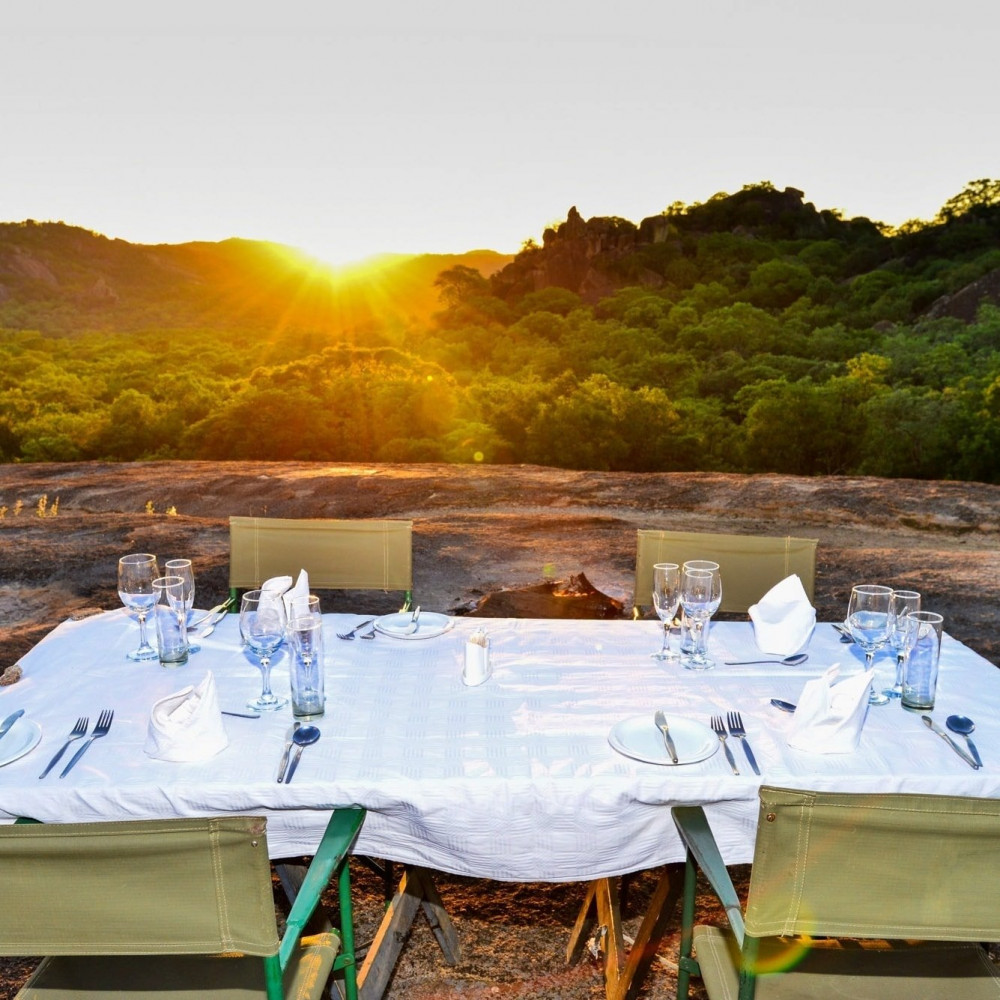
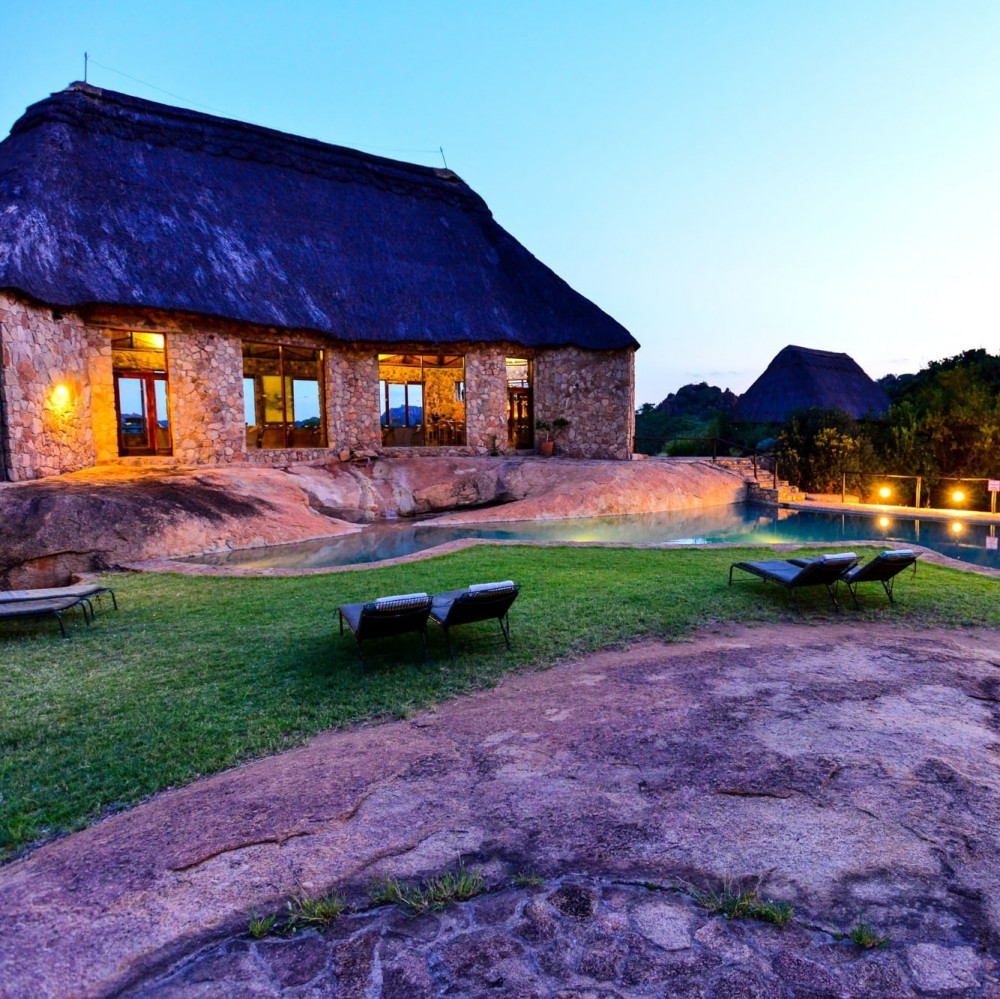
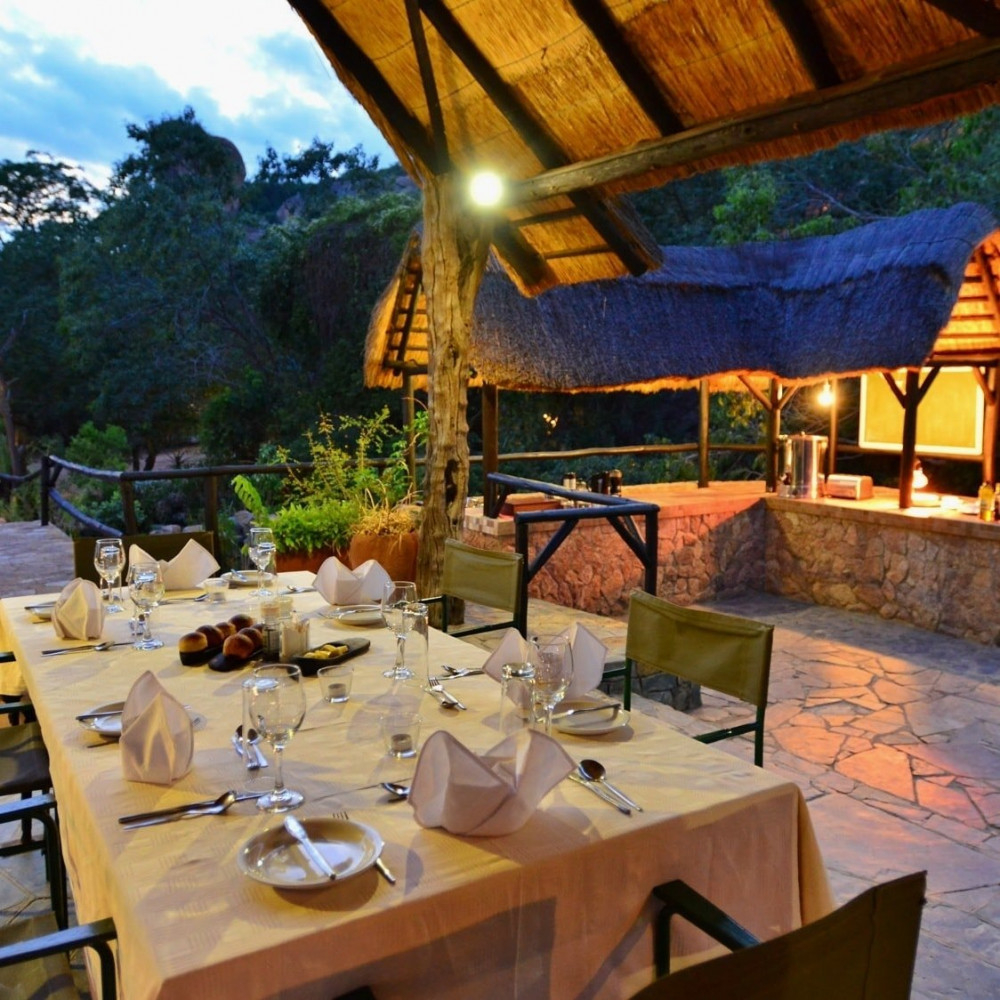
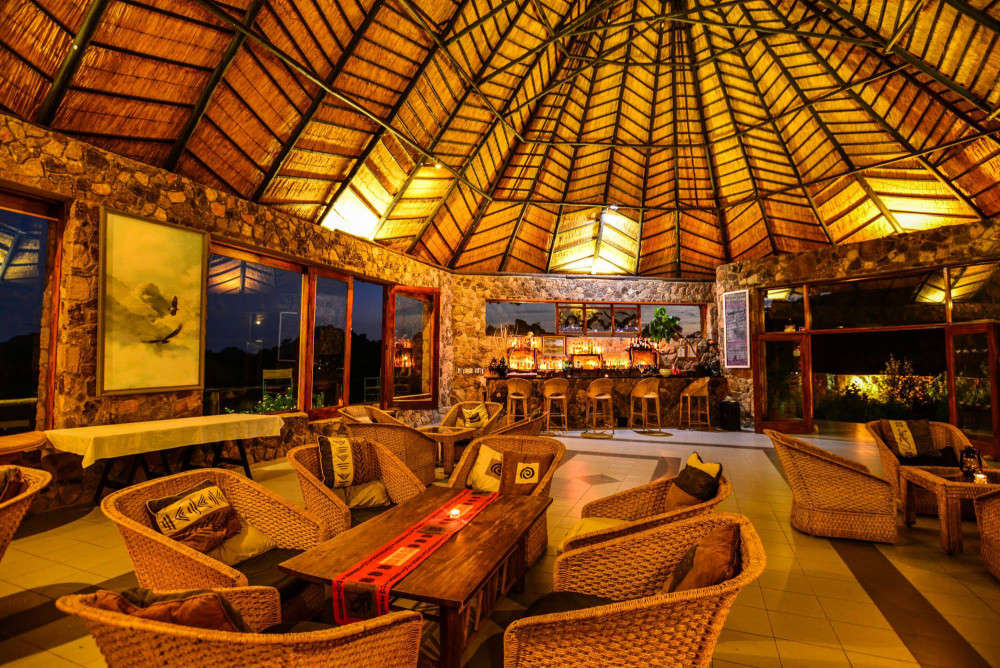
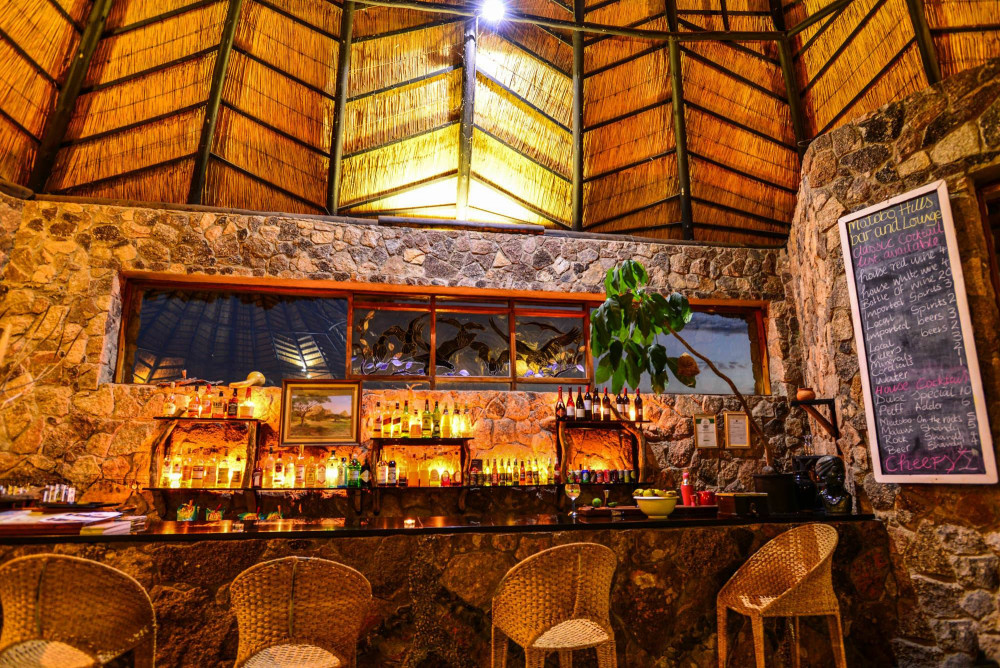
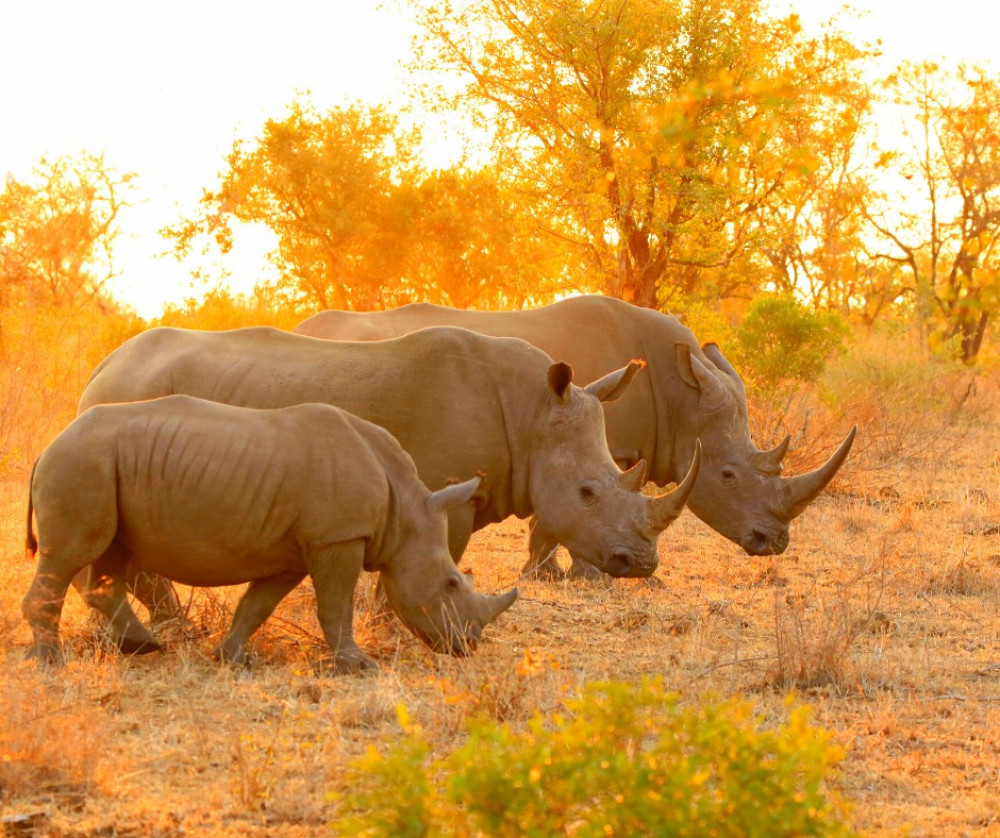
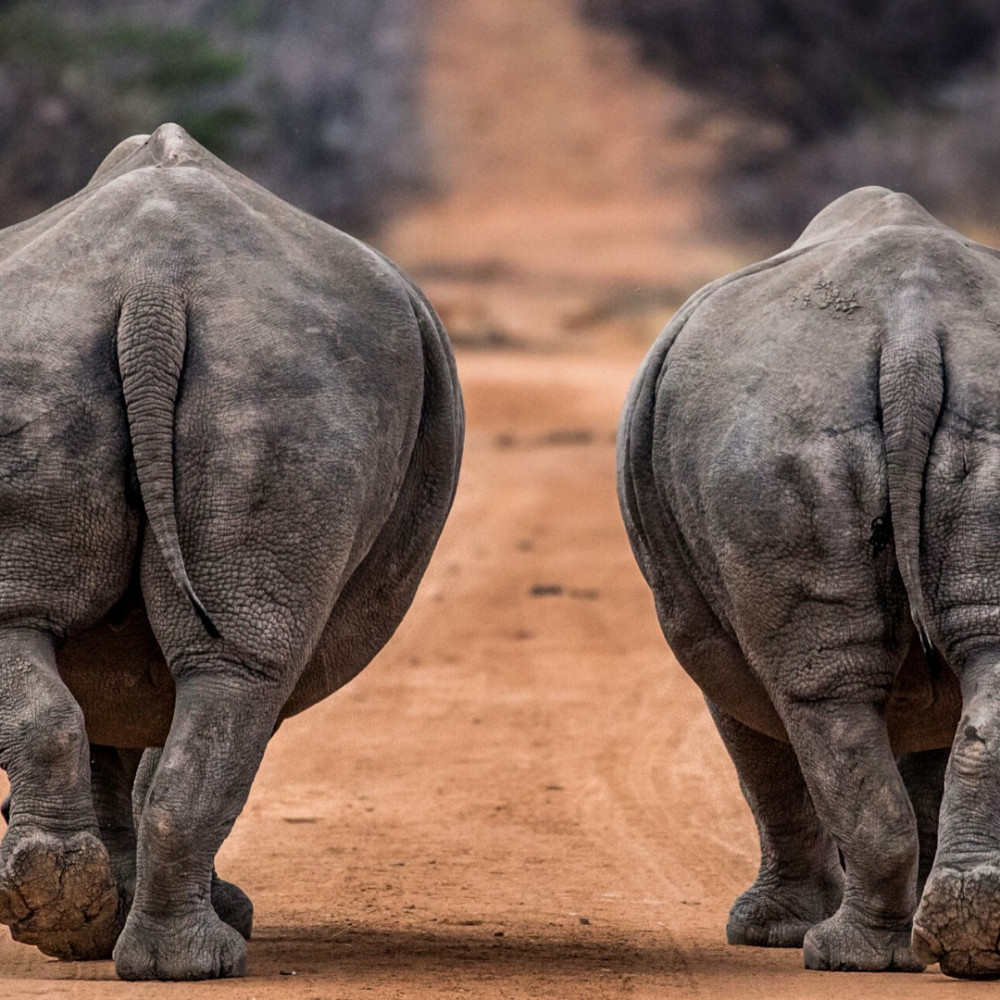
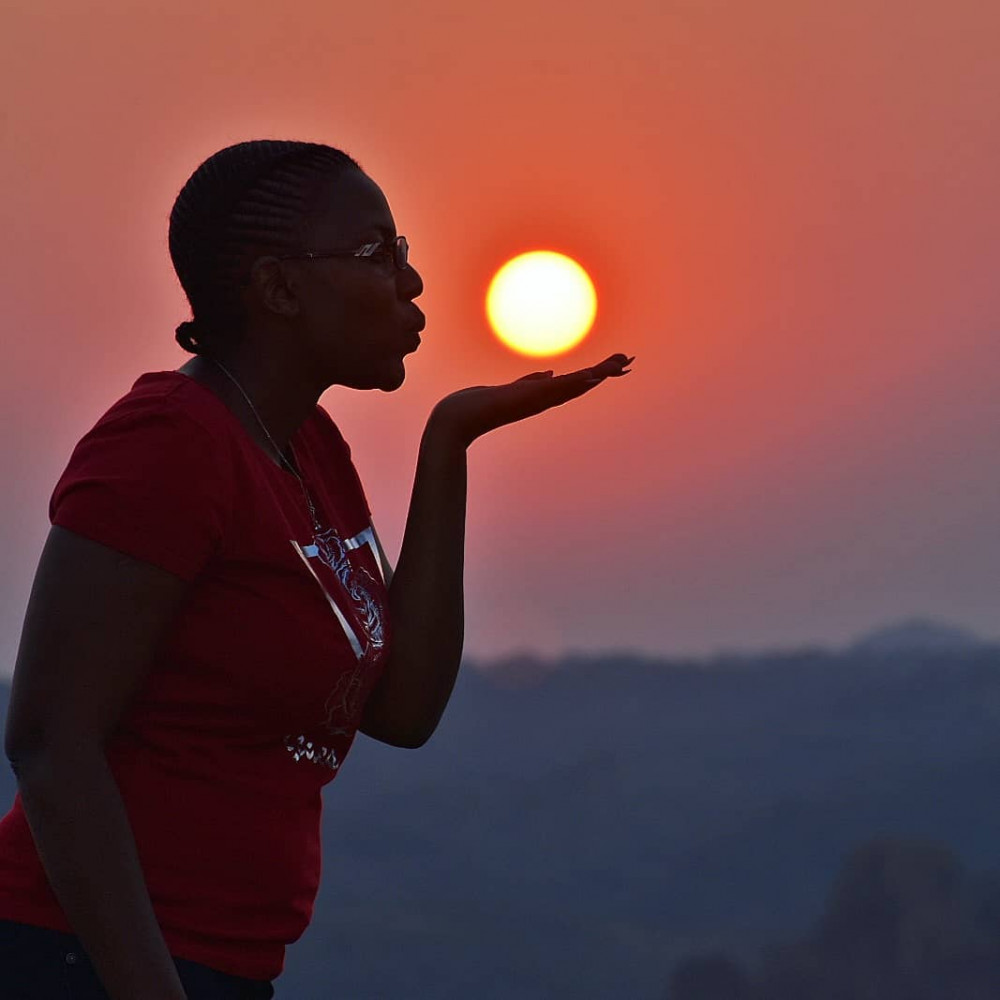










Matobo Hills Lodge
The granites of Matobo were formed over three thousand million years ago and have been carved by the erosive forces of nature into a remarkable gallery of sculptured rock covering several thousand square kilometres.
In general terms two types of granite hills occur in Matobo. The chaotic jumbles of rocks and balancing boulders or ' castle kopjies' have been created by erosion working along the horizontal and vertical lines of weakness that formed as the ancient granites cooled. The massive ' whale backed' domes or ' dwalas' are the result of spheroidal weathering or 'onion skin peeling' that occurs during sudden changes in temperature. All of these forces of erosion act at an excruciatingly slow pace and it has taken nature hundreds of millions of years to create the incredible landscape we see today. Unfortunately she is not yet content with her efforts and her erosive power continues to act upon the surfaces of the rock. Nature will only rest when all the granites are gone and the Matobo becomes a flat, featureless sandy plain. Luckily for us this is going to take several more hundred million years so for now at least, we can continue to enjoy this amazing wilderness in all it's complexity.
The northern section of the hills is a national park and it's wooded gorges and open valleys are home to a wide range of wildlife species including black and white rhinoceros, giraffe, sable antelope, kudu, impala, zebra, wildebeest and tsessebe. Throughout Matobo the granite slopes and boulders are home to a dazzling range of brightly coloured lizards and skinks as well as vervet monkeys, chacma baboons, leopards and such specialised species as klipspringer and rock hyrax. The Matobo is also renowned for its rich diversity of birds of prey including the worlds greatest concentration of black eagles.
For countless millennia Matobo has provided a sanctuary for people and the hills are alive with the history of their human occupiers. For tens of thousands of years during the stone age the hills were home to the Bushmen (or san) and their delicate paintings adorn the walls of hundreds of rock shelters and caves throughout the hills. More than a thousand years ago the first iron age settlers arrived in Matobo and their rusted iron implements,broken chards of pottery and clay beads are still periodically exposed by the summer rains. The Ndebele tribe arrived here from Zulu land in the mid 19th century while European occupiers took control of the hills in 1893. As each successive wave of invaders arrived in the hills, the residents of Matobo sought to hide their food stocks and in many secluded caves empty clay grain bins still stand in mute testimony to the futility of their efforts. Throughout history the allure and spirit of the Matobo hills has captivated it's inhabitants. Mzilikazi, the first great king of the Ndebele people, is buried in a secret cave to the east of the hills while Cecil John Rhodes, the 19th century British colonialist chose to be buried on the lonely summit of Malindidzimu "The Hill of Benevolent Spirits", at a place he called "A View of the World"
Today the southern and eastern sections of the Hills are a tribal area, home to the Ndebele and Kalanga. Many aspects of the modern world have crept into their lives but they continue to be a traditional people and their thatched and decorated mud walled villages still dot the landscape in echoes of earlier times.
The Matobo Hills have always inspired within their human inhabitant feelings of awe and reverence and the Hills have long been regarded as a place of great spiritual importance. Some of the largest granite domes are sacred mountains and must not be pointed at for fear of causing disrespect to the spirits that occupy them. A long established system of belief and worship is still associated with Matobo and several ancient rainmaking shrines continue to be used for age-old rituals and ceremonies. Prior to the commencement of each rainy season and it times of drought, people from throughout Zimbabwe and beyond come to the Matobo shrines to pray for rain.
The Matobo Hills are unique in the remarkable range of African images and experiences they provide. We wish you an exciting and memorable encounter with this captivating landscape.
Safari Activities
• Visit the famous painted caves.
• Game drives into the national park.
• Scenic drives and walks.
• Visit the tribal villages.
• Visit the grave of Cecil John Rhodes at "a view of the world".
• Take early morning walks within the lodge reserve
Amenities
0.0
Out of 5.0